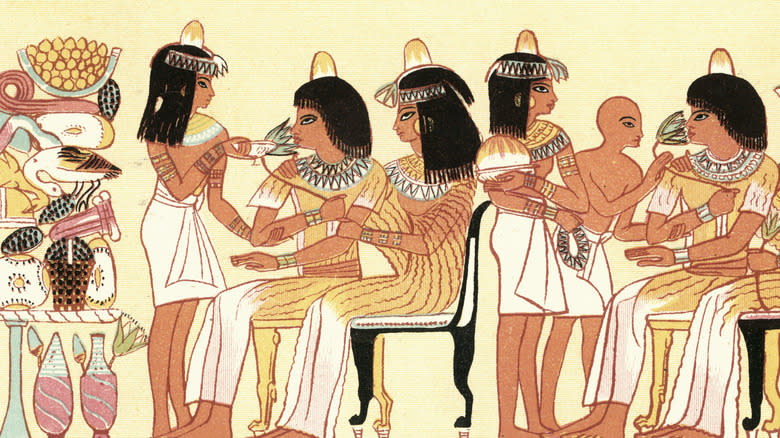Ancient Egyptians Mummified Their Food To Eat In The Afterlife

The ancient Egyptians, renowned for their elaborate funerary practices, are perhaps best known for mummifying their deceased pharaohs and nobility. However, a lesser-known yet equally intriguing aspect of their heritage was the tradition of mummifying food. This custom was rooted in the Egyptians' deep-seated belief in the afterlife, their agricultural reliance, and their reverence for the sustenance that fed both the living and the dead.
Egypt's fixation on the afterlife played a pivotal role in the mummification of food. The civilization believed that the soul continued to exist in the afterlife and required sustenance in the form of offerings. They preserved various meats, including goat, beef, duck, and poultry to ensure souls did not go hungry in the hereafter.
Mummified food was also closely tied to Egypt's farming society. For instance, the annual flooding of the Nile River brought fertility to the soil, allowing agronomists to cultivate abundant crops. Various grains, vegetables, and fruits — such as bread, garlic, cumin, watermelon, figs, dates, pomegranates, and juniper berries — were integral to the Egyptian diet and, by extension, to their concept of the afterlife. The perpetuation of these items symbolized the eternal cycle of life, death, and rebirth to the people of the Land of Ra.
Read more: 6 Canned Meats You Should Buy And 6 You Shouldn't
The Egyptians' Food Mummifying Process Was Intricate

The process of mummifying food was remarkably similar to that used for human mummies, albeit on a smaller scale. First, the food was carefully cured with salt to remove moisture and prevent decay. This was a crucial step as the Egyptians considered libations sacred. Next, the item was coated with a layer of fat, resin, or beeswax, which safeguarded the food against environmental factors. Remember, modern refrigeration as we know it wouldn't be invented for another several millennia.
After preservation, the snacks were carefully wrapped in bandages, which held great divine significance, connecting to the idea of resurrection. The offerings were then placed in royal tombs and temples. This practice was part of burial rituals, ensuring the deceased had access to plenty of sustenance in the afterlife. The offerings also served as a symbol of respect for the bounty provided by the gods. In addition, the mummified foods served as a gesture of gratitude for the food that had nourished them throughout their earthly existence.
The meticulous business of preparing and wrapping foodstuff served to honor the infinite succession of life and death while providing nourishment for the departed. It was a unique and meaningful aspect of ancient Egyptian culture, shedding light on the intricate interplay between spiritual convictions and everyday life.
Read the original article on Mashed.

